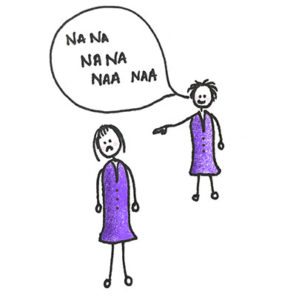In many constructive dismissal claims it is bullying at work that makes employee’s feel that they have no choice but to resign.
Unfortunately, bullying at work is not an actionable claim in itself but has to be linked with another claim such as a constructive dismissal or a discrimination based on a protected characteristic.
Bullying at work can take many forms. It can be another employee intentionally getting into arguments with the employee or just being plain rude to them.
However in many cases it can be a lot more subtle than direct aggressive behaviour.
For example:
- ignoring an employee in conversations;
- disregarding any contribution that the employee makes to a project;
- supplying unacceptable or unfounded criticism;
- overloading the employee with work or;
- setting unachievable targets.
This list is not exhaustive and could take other forms which may also be considered bullying.
Bullying at work – What steps to take
The employee being bullied should, first off, speak to someone at work about the situation. Very often bullies have more than one victim and the employer may discover that other people are experiencing a similar thing as well.
If speaking about the problems to a work colleague doesn’t ease the pressure on the employee, then there are a few options they should consider before handing in their notice. Especially if the employee is considering making a constructive dismissal claim.
Informally
The employee could try and deal with the bullying at work informally. They should try to raise the matter directly with the person doing the bullying. They may find out that it wasn’t deliberate and now that they know they might stop. If the employee can’t to do this, they could always ask a work colleague to do this for them.
Keep a diary
It is advisable that the employee keeps a diary of any bullying that does occur. If they decide to take legal action, the diary will provide useful evidence to support their claim.
Official complaint
If the informal approach doesn’t work and the bullying continues the employee should consider making an official complaint. This is known as an official grievance and will be really important if the employee wants make a claim at tribunal for constructive dismissal.
When writing (or emailing) the complaint, the employee should follow the company grievance policy. This should be laid out in their employment contract or staff handbook. If this doesn’t exist, the employee should write a clear, concise letter to the person who can resolve the issues. This could be their manager or HR department.
Resignation
If the employee sees no improvement following the grievance procedure and the bullying continues, they must then make a decision about whether or not to resign.
Resignation should only be considered as a final resort. The employee could then, potentially, make a claim for constructive dismissal.
Proof
Having said this, the employee should be aware that constructive dismissal claims are very difficult to win in the employment tribunal. The employee must prove that the treatment they were receiving made it impossible for them to continue working.
The employee will need to show that the company has failed to protect them from bullying. Not only this, but to such a degree that it had breached their employment contract.
Don’t delay
In order to have any chance of success the employee needs to make sure that they do not wait too long to resign.
If the employee has listed a series of events that caused them to resign, they can’t decide to resign several months after the last event. If they do, the tribunal might consider that they have accepted the breach of contract (in this case the implied duty of trust).
What Next?
If you feel that you are being bullied at work please do not hesitate to call us on 020 3835 3940. One of our team will then be able to assess your claim and give some initial advice.


